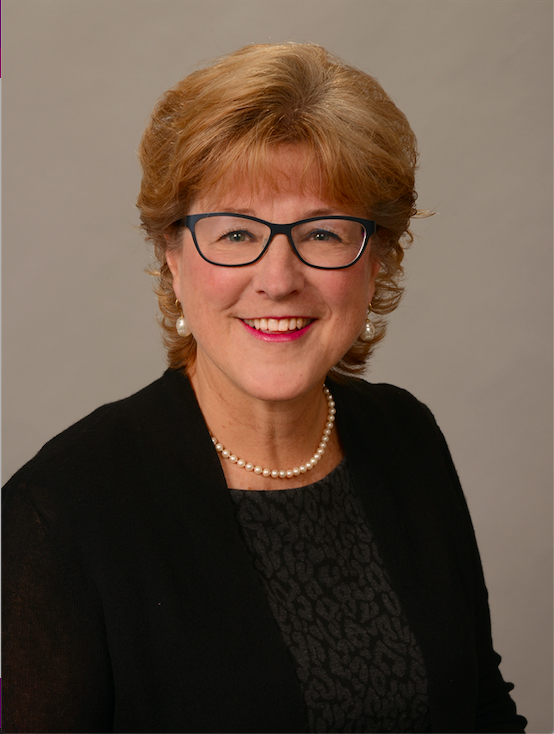News
Article
Key Considerations for Choosing the Right SMA Treatment
Author(s):
FDA-approved treatments for spinal muscular atrophy differ in their mechanisms of action, safety profiles, and administration challenges, with key selection factors like patient age and gene copy number, according to Julie Parsons, MD, a professor and neurologist from the University of Colorado School of Medicine.
Spinal muscular atrophy (SMA) treatment has evolved significantly with the introduction of disease-modifying therapies. In this exclusive Q&A, Julie Parsons, MD, professor of clinical pediatrics and neurology and co-director of the Neuromuscular Clinic at Children’s Hospital Colorado, discusses the key differences between FDA-approved SMA therapies—onasemnogene abeparvovec-xioi (Zolgensma), nusinersen (Spinraza), and risdiplam (Evrysdi).
Julie Parsons, MD

She highlights the unique mechanisms of action of these treatments, the critical factors influencing treatment selection, and the evolving management strategies for patients over the age of 2 years. Parsons emphasizes the importance of shared decision-making, patient-specific considerations such as SMN2 copy number and treatment compliance, and the ongoing efforts to refine care guidelines as more data on long-term outcomes emerge.
AJMC: How does the mechanism of action of onasemnogene abeparvovec-xioi differ from other FDA-approved therapies like nusinersen and risdiplam?
Parsons: When we look at disease-modifying therapies for spinal muscular atrophy at this point, we have 2 SMN (survival motor neuron) protein-directed therapies. The first one, onasemnogene abeparvovec-xioiactually targets the SMN 1 protein In patients who have spinal muscular atrophy, 95% of them have an SMN 1 gene mutation that will cause the survival motor neuron not to be present in those patients. Onasemnogene is an SMN 1-targeted therapy whose design is to give the transgene for SMN 1 [protein] production back to a patient. Risdiplam and nusinersen therapies target the SMN 2 protein.
SMN 2 is sort of a backup gene for SMN 1. Patients with spinal muscular atrophy have a variety of different copy numbers of SMN 2, [ranging] from at least a single copy up to maybe 5 or 6 copies. The SMN 2 gene produces more of the SMN protein as a backup. A patient with spinal muscular atrophy may be treated by giving them risdiplam or nusinersen, which upregulates SMN 2 protein production.
Normally, the SMN 2 gene will produce about 10% to 15% of functional protein, and with these antisense oligonucleotides or small molecule compounds working on alternative splicing, we can increase that amount of SMN protein. Onasemnogene targets SMN 1, and risdiplam and nusinersen target SMN 2 upregulation.
AJMC: What goes into the process of trying to decide between the 3 FDA-approved therapies for SMA that you mentioned?
Parsons: I think there are several things to consider as a clinician. I am a firm believer in shared decision-making. We have 3 excellent agents, and we discuss treatments with the family or with the patient, present the data, and then we decide together what the best agent is for them to be treated with.
Of course, onasemnogene, [the only treatment targeting] SMN 1, at this point, is FDA-approved only for children under the age of 2. That is not a choice for patients over two and into the adult ages and stages. Those patients can be treated with risdiplam or nusinersen. In addition, for gene transfer therapy with onasemnogene patients who are antibody positive, we consider other disease-modifying therapies. It's not safe to treat those patients with onasemnogene, so we need an alternate agent such as risdiplam or nusinersen at that point. I really look at the clinical trial evidence with the patient and family, in terms of what outcomes are based on patient age, their functional ability at time of treatment, and the SMN 2 copy number that they have.
For instance, a patient who has just 2 copies of SMN 2 would typically present as a more severe phenotype. Those patients, to me, are an emergency to treat. I would want to make a decision very, very quickly. If a patient has 4 copies of SMN 2, we may have a little bit more time. We would expect that there would be a less severe phenotype, so we might have more time for consideration and discussion about treatments, but it is an emergency for patients who have 2 copies to be treated. All of the clinical trials have shown that earlier treatment leads to better outcomes.
What we look at from a practical standpoint, besides the age of the patient and their antibody status, is the safety profile. Each of these agents has different adverse events and safety issues that come with them. I think those are really important to talk about with patients. Then we have to consider [treatment] compliance. If a patient is asking to take risdiplam, which is an oral agent, we have to make sure that they actually are taking that medication every day and have the ability to take that medication every day. I've had some young adult patients who say, “I know I'm not going to do that. I would much rather be treated with nusinersen, where I know that I can come in quarterly and have a spinal tap and get the drug, and I don't have to think about it. I don't have to worry about it.” And so, they will make that choice.
Nusinersen is more challenging to give from a technical standpoint. It is an intrathecal agent, and it does have to be given via spinal tap. The patient and their family need to have access to a medical facility that can deliver nusinersen safely. In some of the patients who are very weak or have significant respiratory difficulties, there needs to be a good medical team there who can safely deliver that agent. All of these factors go into consideration in terms of what choice a patient and their family will make.
AJMC: How are patients 2 years and older who are living with SMA currently managed?
Parsons: To me, the foundational treatment for any patient with SMA is following care consideration guidelines. The most recent care guidelines were published in 2018,1 so they are a little bit old right now. Cure SMA is trying to update those care guidelines and care considerations currently. This is foundational when looking at multidisciplinary care to provide the best care for patients with spinal muscular atrophy.
Interestingly, with the advent of disease-modifying therapies, we now have different populations of patients with SMA. Newborn screening for SMA is available in every US state, so we can identify about 95% of patients in the newborn period and treat them right away. This population of patients that are treated earlier looks different from the prevalent population of patients, where we have the young and older adult patients and some of the tween patients. The phenotypes are different now, so we have to consider patients treated with disease-modifying therapies, who are treated early on, as well as the prevalent population of patients who did not benefit from that very early treatment.
Besides the care considerations and care guidelines of treating all patients with SMA, we do look at how to start disease-modifying therapies for different patient age groups. But all patients need to be followed really, really closely. We're still learning about what those patients that are treated with disease-modifying therapies will look like as they age and grow. Looking at different outcomes is important, and we can't measure outcomes with treatment unless we see the patients in clinic. We monitor patients very closely, no matter what age they are, on disease-modifying therapies in particular, so that we can collect more data and information about some of the new outcomes and issues that are occurring.
Interestingly, there are new phenotypes that are developing even in the early disease-modifying therapy-treated population. We're also looking at some emerging phenotypes and collecting that information to help determine the best way to treat those patients.
Reference
1. Updated 2018 SMA standards of care statements available online. Cure SMA. Published August 16, 2018. Accessed April 4, 2025. https://www.curesma.org/updated-2018-sma-standards-of-care-statements-available-online

Understanding SMA Subtypes and the Impact of Treatment Advances

Redefining Functional Measures in SMA: Insights From Clinical Research

